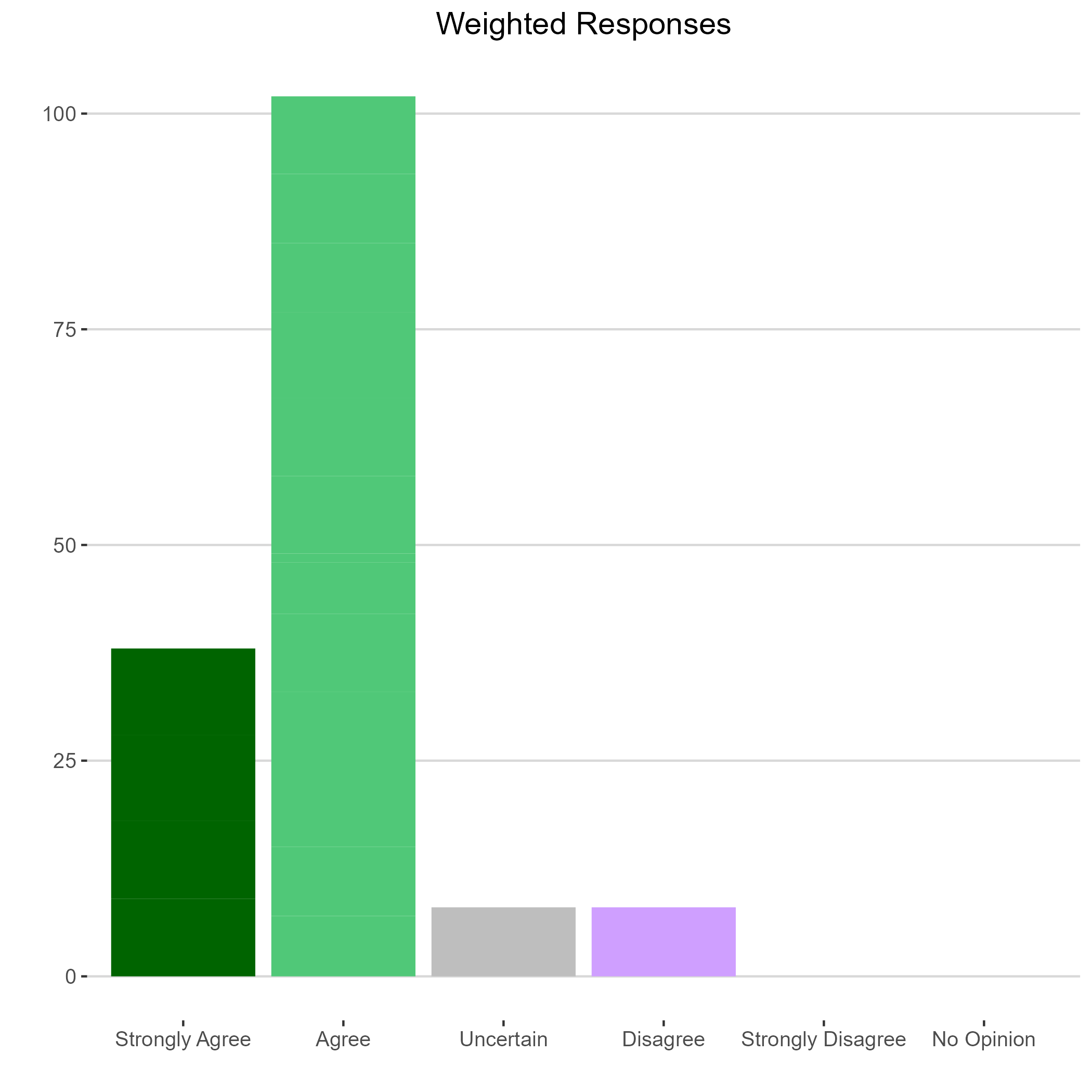| Jonathan Andreas |
Bluffton University |
Disagree |
2 |
There is a lot of research on this type of scenario and some does show that low-skilled immigration reduces low-skill wages. But most research shows that native-born workers mostly switch to higher-paying jobs and most of the people who stay in low-wage jobs are immigrants themselves, so it PROBABLY benefits most low-skill, native-born workers a bit, but it could go either way for them and they certainly don't benefit as much as everyone else. |
| Kevin Egan |
University of Toledo |
Disagree |
8 |
Many economic studies have looked at this question and have not found this to be true. Many jobs are complementary and moreover, every new worker is also a new consumer for products so it all evens out. Another way to think about it: all children are future workers. U.S. citizens are having less children. Without immigration the U.S. population is shrinking. Every adult immigrant is an immediate worker and consumer and their children are future workers and consumers. |
| Kenneth Fah |
Ohio Dominican University |
Disagree |
9 |
|
| Hasan Faruq |
Xavier University |
Uncertain |
8 |
Low-skill workers also do jobs that local workers no longer want to do |
| Will Georgic |
Ohio Wesleyan University |
Strongly Disagree |
8 |
Since the immigration is disproportionately high-skill, it seems plausible that recent immigration has applied upward pressure on low-skill wages in the state by increasing demand for goods/services to a greater extent than the competition for low-skill jobs increased. |
| Bob Gitter |
Ohio Wesleyan University |
Uncertain |
7 |
To some extent they may take the place of jobs like roofers and busboys but the unskilled immigrants increase the demand for other products. Probably close to no net effect. |
| Nancy Haskell |
University of Dayton |
Disagree |
8 |
|
| Paul Holmes |
Ashland University |
Strongly Disagree |
9 |
I think this is almost certainly false. Low-skill immigrants in Ohio are concentrated in jobs that are just not popular with low-skill domestic workers (agriculture, food service, etc.). I think it's more likely that low-skill immigrants depress the wages of existing (former) immigrants. Further, low-skill workers have seen substantial wage growth in the last few years, and most of those gains have gone to domestic workers (by my observation, at least). |
| Michael Jones |
University of Cincinnati |
Disagree |
7 |
|
| Trevon Logan |
Ohio State University |
Disagree |
8 |
|
| Diane Monaco |
Economics Professor |
Disagree |
3 |
Immigrants make up approximately 20 percent of the overall United States workforce with only 5 percent of Ohioans NOT being born in the US — this is well BELOW average! The workforce plays an important role in most industries with an important mix of lower, middle, and high wage jobs. Immigration contributes to strong economic growth with future immigration increasing GDP at an increasing rate. Immigrants improve workforce efficiency and bring in a larger share of the world’s most productive, skillful & talented workers. If Ohio is already behind in the important immigrant inflows of these increasing productive/skillful/talented workforce benefits, the state will increasingly be hurt by this effect. |
| Curtis Reynolds |
Kent State University |
Uncertain |
5 |
I do not know this to be true in Ohio, but in general lower-skilled immigrants have tended to increase the supply of labor in lower-skilled markets which puts downward pressure on wages. However, effects found in the literature are often not large (however, any decrease in wages among lower income people could be a cause for concern). In Ohio, this would likely happen in some industries, particularly where individuals have less than a high school degree (immigrants in Ohio are more likely to have a bachelors degree or graduate degree but also more likely to not have any degree). However, the data is not clear that there has been an actual increase in low-skilled immigration in Ohio to cause any effect. |
| Albert Sumell |
Youngstown State University |
Uncertain |
5 |
The economic research on this question is mixed. |
| Iryna Topolyan |
University of Cincinnati |
Uncertain |
5 |
|
| Ejindu Ume |
Miami University |
Uncertain |
8 |
|
| Rachel Wilson |
Wittenberg University |
Uncertain |
5 |
Beyond the supply and demand of low-skill workers in Ohio, if immigrants spend money in Ohio that creates more demand here which could increase demand for low skill workers thus putting upward pressure on wages. |






